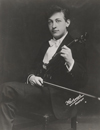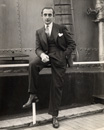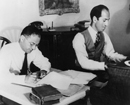Reviews
Porgy Launches the Met's New Season
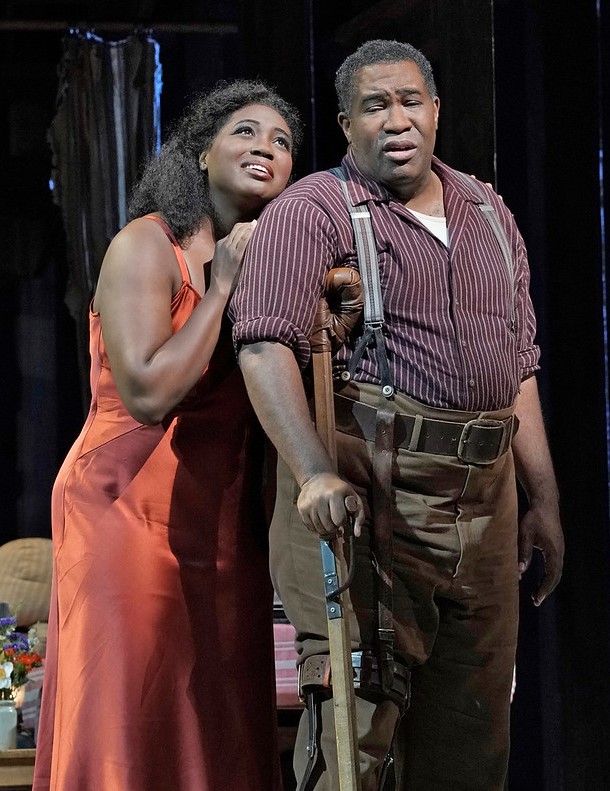 When the English National Opera performed Porgy and Bess a year ago in a new co-production with the Metropolitan Opera, it was widely predicted that the Met audience would love it. That prediction proved to be spot-on on Monday evening (September 23) when the production by James Robinson opened the company’s 2019-20 season to vociferous applause.
When the English National Opera performed Porgy and Bess a year ago in a new co-production with the Metropolitan Opera, it was widely predicted that the Met audience would love it. That prediction proved to be spot-on on Monday evening (September 23) when the production by James Robinson opened the company’s 2019-20 season to vociferous applause.
Robinson’s staging takes a straightforward, naturalistic approach that lets the opera speak for itself, which no doubt accounted for many of the cheers. His Catfish Row—the fictional name of the Charleston, S.C., fishing community where the action, set in the 1920s, takes place—consists of a multi-room structure outlined by timber beams (Michael Yeargan designed the sets). It functions respectably on a revolving turntable, and its modest dimensions add to a sense of community, of teeming humanity, in fact. With the stage often occupied by some 70 people, all radiating energy and dressed in colorful period style (Catherine Zuber designed the costumes), you wonder where they can all sleep.
Porgy raises questions about race, but this production does not address them. One thing it does do is dispense with the demeaning goat cart that in prior productions has kept the crippled (this word is also unsettling, of course, but we leave that discussion to another time) Porgy close to the ground when he seeks to transport himself; here he is supported by crutch and cane. Could some radical regie production mitigate the racial issues or make them go away? It seems unlikely, and the Gershwin estate, which continues to insist on an all-black cast for the opera, would probably not allow one in any case. It is often pointed out that the creators of this opera about blacks were George and Ira Gershwin (music and lyrics), sons of Russian Jewish immigrants, and DuBose Heyward (libretto and lyrics), a member of a prominent white South Carolina family. But if we take the view that such origins taint the end product, or if we start scrutinizing operas for offensive material, we’ll all be artistically poorer in the end.
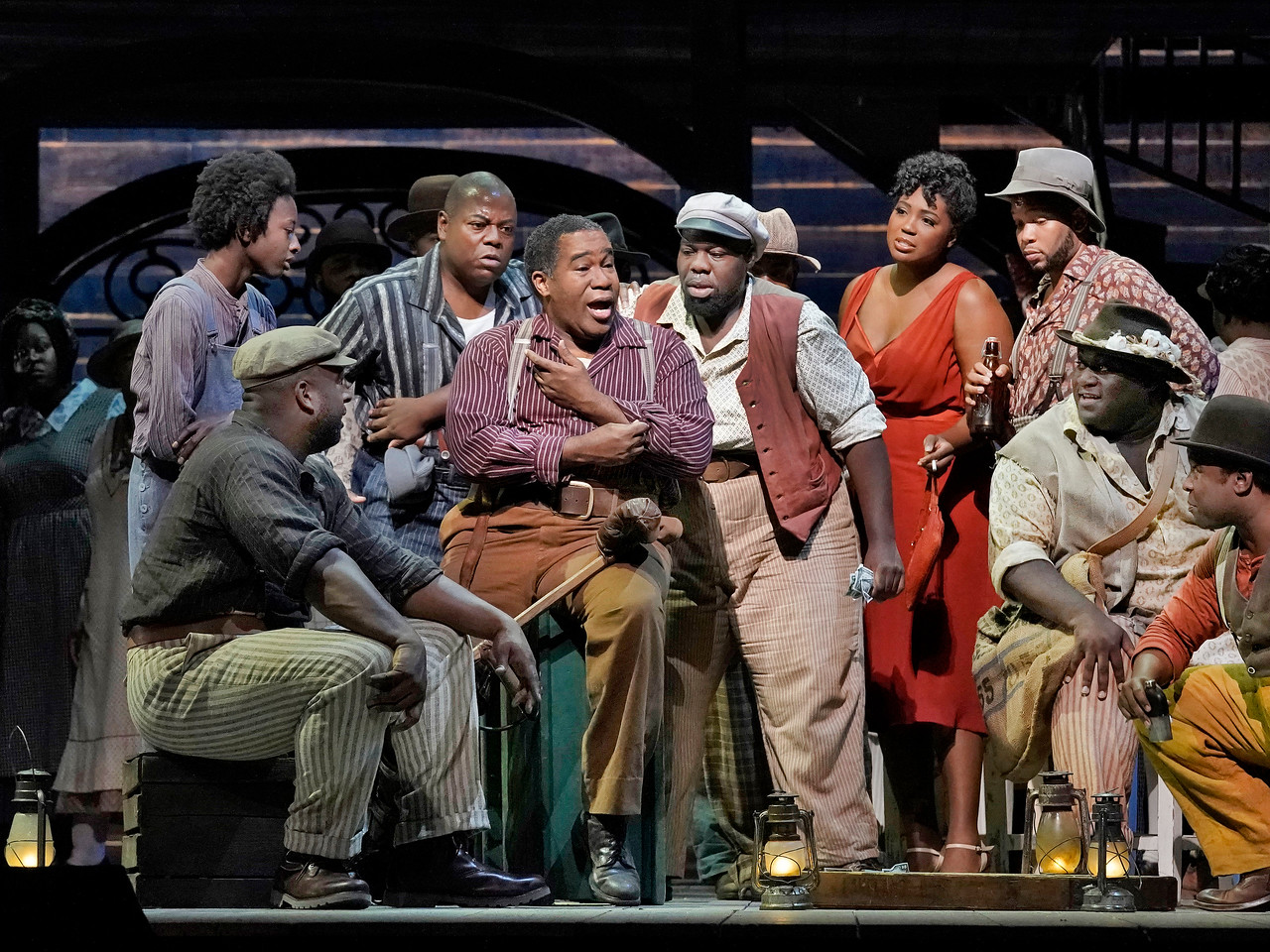 From left: Ryan Speedo Green (with cap) as Jake, Alfred Walker as Crown, Eric Owens as Porgy, Errin Duane Brooks as Mingo, Angel Blue as Bess, Reginald Smith, Jr. (seated) as Jim, and Chauncey Packer as Robbins in Porgy and Bess.
From left: Ryan Speedo Green (with cap) as Jake, Alfred Walker as Crown, Eric Owens as Porgy, Errin Duane Brooks as Mingo, Angel Blue as Bess, Reginald Smith, Jr. (seated) as Jim, and Chauncey Packer as Robbins in Porgy and Bess.
The problem I have with Porgy is related but somewhat different. In treating an exotic (for opera) subject, its creators stuffed it with an overabundance of local color, which happens to be related to race—gambling, snorting cocaine, prayer vigils, squalor, general hardship, and so forth. It sometimes seems that they had a list of things to tick off, rather in the manner of Puccini’s depiction of miners in La Fanciulla del West. In Porgy these episodes often slow down the drama or cause it to move fitfully en route to the next classic song, a journey that can feel inordinately long. This is a problem that Robinson’s direction, which seems oriented toward bringing each scene to life as best it can, does not solve. It’s not a question of any deficiency in Gershwin’s music for connecting passages, which is quite inventive, even if the work’s main glory is found in the songs.
In any case, the Met’s cast is strong from top to bottom. Eric Owens gives an arresting, thoughtful portrayal of Porgy that brings out the character’s inner wisdom. He was particularly moving at the end, upon learning that Bess had left him, especially in the splendid, rather operatic trio with Maria and Serena, and in resolving to follow Bess to New York. He sounded good in the role, even if others among the low-voiced men sang somewhat more robustly. Angel Blue’s full, opulent soprano was heard to impressive effect as Bess, and she handled well Bess’s ambivalent feeling toward the men in her life. Still, her characterization sometimes seemed generalized and in need of sharper details.
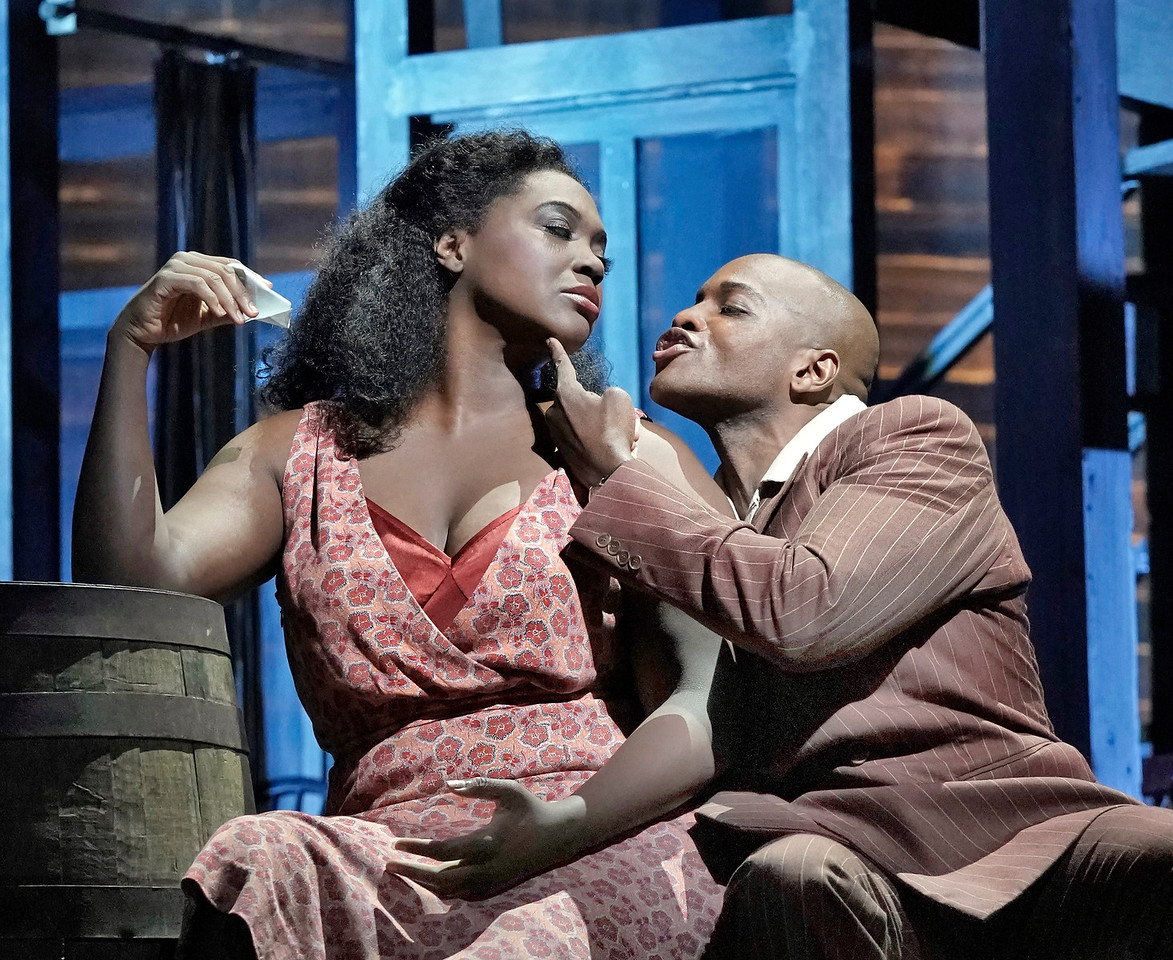 Often a highpoint of Porgy occurs immediately, and such was the case here with Golda Schultz’s meltingly beautiful “Summertime.” Latonia Moore was sensational in Serena’s lament for her murdered husband, and Denyce Graves exerted fearsome authority as Maria in chasing away the dope peddler Sportin’ Life. The latter was sung in a smooth, insinuating manner by Frederick Ballentine, in his Met debut; Errin Duane Brooks, also a Met debutant, made a mark in the small role of Mingo. Ryan Speedo Green and Alfred Walker gave strong, vocally powerful performances as the ill-fated fisherman Jake and the villainous Crown. Leah Hawkins and Chauncey Packer, the former in the Met’s young artist program, the latter in his Met debut, made brief but winning appearances as the Strawberry Woman and the Crab Man.
Often a highpoint of Porgy occurs immediately, and such was the case here with Golda Schultz’s meltingly beautiful “Summertime.” Latonia Moore was sensational in Serena’s lament for her murdered husband, and Denyce Graves exerted fearsome authority as Maria in chasing away the dope peddler Sportin’ Life. The latter was sung in a smooth, insinuating manner by Frederick Ballentine, in his Met debut; Errin Duane Brooks, also a Met debutant, made a mark in the small role of Mingo. Ryan Speedo Green and Alfred Walker gave strong, vocally powerful performances as the ill-fated fisherman Jake and the villainous Crown. Leah Hawkins and Chauncey Packer, the former in the Met’s young artist program, the latter in his Met debut, made brief but winning appearances as the Strawberry Woman and the Crab Man.
David Robertson presided over an engrossing reading of the vibrant score. A formidably, newly formed ensemble of 60 singers, expertly trained by chorus masters Donald Palumbo and David Moody, performed the choral honors. Choreography by Camille A. Brown erred on the side of excess. The staging is the Met’s second of the opera; the first, from 1985, was the last Met production by the venerable team of Nathanial Merrill and Robert O’Hearn. It racked up 54 performances but lasted only four seasons. A longer shelf life can be predicted for the new one, and it might even prove to be a revenue generator for the company.
Bottom photo: Bess (Angle Blue) is taunted by Sportin' Live (Frederick Ballentine)
Photos by Ken Howard





 FEATURED JOBS
FEATURED JOBS

 RENT A PHOTO
RENT A PHOTO
